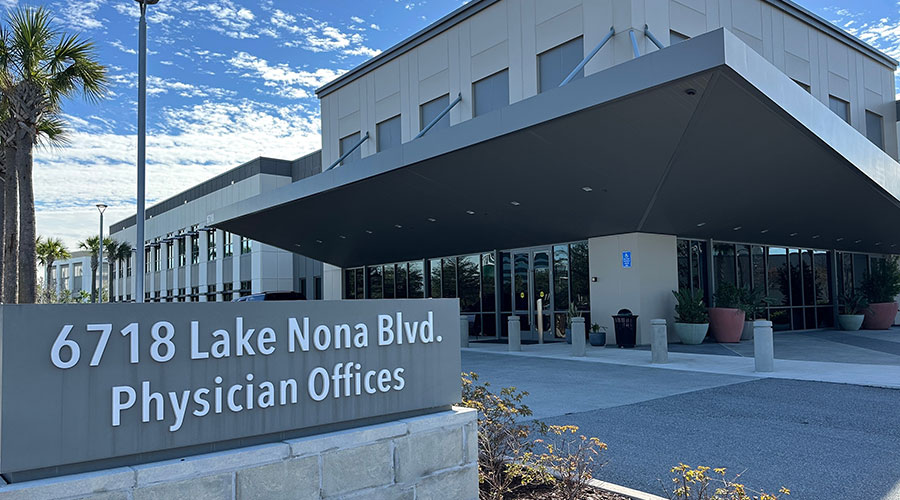SUNNYVALE, Calif.- A new study, published in the February issue of Health Affairs, found that in terms of quality-adjusted life-years gained, the benefits of robotic-assisted partial nephrectomy surgery for kidney cancer patients outweighed the health care and surgical costs to patients and payers by a ratio of five to one.
The Precision Health Economics (PHE) study set out to determine if the investment in a surgical robot could be linked to improvements in long-term patient outcomes. The study found that partial nephrectomies had significantly lower rates of renal failure when compared with radical nephrectomies. The study also concluded that the costs incurred in adopting robotic-assisted surgery were offset by higher survival and lower renal impairment rates.
"Partial nephrectomy, or kidney-sparing surgery, is considered the standard of care for clinically appropriate patients as a means to slow the progression of renal failure and reduce the risk of dialysis," said Dr. Myriam Curet, Chief Medical Officer, Intuitive Surgical. "The PHE study demonstrates that those hospitals offering minimally invasive partial nephrectomies utilizing a da Vinci(R) Surgical System delivered both improved patient outcomes and considerable long-term economic benefits."
"The preferred and healthiest option to cure a small renal cancer is to perform a partial nephrectomy," said Sam B. Bhayani, M.D., M.S., Professor of Urology, Surgery Washington University School of Medicine and Chief Medical Officer, Vice President of Medical Affairs at Barnes-Jewish West County Hospital, Saint Louis, Missouri. "The most effective way for a hospital and surgeon to perform partial nephrectomy is to have access to robotic surgery."
Approximately 297,000 nephrectomies were performed in the United States from 2001 to 2010. The study found that adoption of robotic-assisted minimally invasive surgery (MIS) led to a 52 percent increase in the rate of kidney sparing partial nephrectomy versus full radical nephrectomy. The five-year net benefit per procedure (in terms of the difference between quality-adjusted survival gains and health care costs incurred) was $406,217 for radical and $512,561 for partial nephrectomy patients, for an incremental value of $106,344 for each patient who received partial rather than radical nephrectomy. The study found that if all hospital referral regions (HRRs) had adopted the da Vinci(R) Surgical System, there would have been an additional 23,166 partial nephrectomies performed over the study period. Valuing each partial nephrectomy procedure at $106,344, would have generated an additional $2.5 billion in value had the da Vinci(R) Surgical System been adopted across all HRRs.
"This study demonstrates the benefits - and pitfalls - of comparative research," said Dana P. Goldman, Director of the Leonard D. Schaeffer Center for Health Policy and Economics at the University of Southern California. "While multiple surgical techniques may be equally beneficial, it turns out only robotic surgery can ensure that more patients get the best treatment."
Of note, the study found no evidence that the availability of robot-assisted MIS increased the likelihood that inappropriate patients received partial nephrectomy. The study did find that use of robotically assisted surgery might increase access to partial nephrectomy, which is associated with improvements in one-year survival rates after surgery and large reductions in renal failure rates. HRRs most likely to offer partial nephrectomy attained significantly lower rates of renal failure in all three time periods studied.
The PHE study found that partial nephrectomy improved one-year mortality by 5.7 percentage points. In comparison, Hung-Jui Tan, et al found a 5.6 percentage-point improvement in two year mortality1.
Study Design
The study used national cancer registry data linked with Medicare
claims for 1995 - 2010, the period in which robotic-assisted MIS was
adopted into clinical practice. Patient cost and outcome data were
derived from the Surveillance, Epidemiology and End Results (SEER)
Program, linked to Medicare claims. The study sample included 26,789
Medicare beneficiaries who were diagnosed with kidney cancer between
1996 and 2010 and had a nephrectomy.
Study Limitations
The study focused on kidney cancer, and the results may not be
generalizable to other cancers.
The data were restricted to Medicare. Robot-assisted surgery may
produce greater benefits in working-age adults because of their longer
time horizon for health gains to accrue.
PHE conceptualized, designed, conducted the data analysis and managed
the study. Intuitive Surgical funded the study and supported article
review. Intuitive Surgical did not have any direct involvement in study
execution or data analysis.
About the da Vinci Surgical System
The da Vinci Surgical System is a surgical platform designed to enable
complex surgery using a minimally invasive approach. The da Vinci
Surgical System consists of an ergonomic surgeon console or consoles, a
patient-side cart with three or four interactive arms, a
high-performance vision system and proprietary EndoWrist(R)
instruments. Powered by state-of-the-art technology, the da Vinci
Surgical System is designed to scale, filter and seamlessly translate
the surgeon's hand movements into more precise movements of the
EndoWrist instruments. The net result is an intuitive interface with
improved surgical capabilities. By providing surgeons with superior
visualization, enhanced dexterity, greater precision and ergonomic
comfort, the da Vinci Surgical System makes it possible for skilled
surgeons to perform more minimally invasive procedures involving
complex dissection or reconstruction. Potential benefits are specific
to the procedure as well as the model da Vinci System referenced in the
footnoted publications. For more information about clinical evidence
related to da Vinci Surgery, please visit
www.intuitivesurgical.com/company/clinical-evidence/.
Surgical Risks
Negative outcomes, risks, and complications of nephrectomy and partial
nephrectomy include: poor kidney function often due to limited blood
flow, leaking of urine, cut or tear in the spleen, bowel injury,
trapped air between the chest wall and lung, injury to diaphragm
(muscle separating the chest from the abdomen), urinary fistula
(abnormal bond of an organ, intestine or vessel to another part of the
body), abnormal pooling of urine, limited or cut off blood supply to
kidney, abnormal pooling of lymph fluid.
All surgery presents risk, including da Vinci(R) Surgery and other
minimally invasive procedures. Serious complications may occur in any
surgery, up to and including death. Examples of serious or
life-threatening complications, which may require prolonged or
unexpected hospitalization, include injury to tissues and/or organs,
bleeding, infection and/or internal scarring that can cause
long-lasting dysfunction and/or pain. Risks of surgery also include the
potential for equipment failure and/or human error. Results, including
cosmetic results, may vary.
Risks specific to minimally invasive surgery, including da Vinci
Surgery, include temporary pain and/or nerve injury associated with
positioning; temporary pain and/or discomfort from the presence of air
or gas; a longer operation and time under anesthesia and conversion to
another technique. If your surgeon needs to convert the surgery to
another technique, this could result in a longer operative time,
additional time under anesthesia, additional or larger incisions and/or
increased complications.
Patients who bleed easily, who have abnormal blood clotting, are
pregnant or morbidly obese may not be candidates for minimally invasive
surgery, including da Vinci Surgery. Patients should talk to their
doctor about his/her surgical experience and to decide if da Vinci
Surgery is right for them. Patients and physicians should review all
available information on non-surgical and surgical options in order to
make an informed decision. For important safety information, including
surgical risks and indications and contraindications for use, please
also refer to www.davincisurgery.com.
Forward-Looking Statement
This press release contains forward-looking statements within the
meaning of the Private Securities Litigation Reform Act of 1995. These
forward-looking statements are necessarily estimates reflecting the
best judgment of our management and involve a number of risks and
uncertainties that could cause actual results to differ materially from
those suggested by the forward-looking statements. These
forward-looking statements should, therefore, be considered in light of
various important factors, including those under the heading "Risk
Factors" in our annual report on Form 10-K for the year ended December
31, 2013, as updated from time to time by our quarterly reports on Form
10-Q and our other filings with the Securities and Exchange Commission.
Statements using words such as "estimates," "projects," "believes,"
"anticipates," "plans," "expects," "intends," "may," "will," "could,"
"should," "would," "targeted" and similar words and expressions are
intended to identify forward-looking statements. You are cautioned not
to place undue reliance on these forward-looking statements, which
speak only as of the date of this press release. We undertake no
obligation to publicly update or release any revisions to these
forward-looking statements, except as required by law.
1 Tan HJ, Norton EC, Ye Z, Hafez KS, Gore JL, Miller DC. Long-term
survival following partial vs radical nephrectomy among older patients
with early-stage kidney cancer. JAMA. 2012;307(15):1629-35.

 States Move Forward to Better Protect Senior Citizens
States Move Forward to Better Protect Senior Citizens Archer and REDA to Transform Newport Beach Building into Outpatient Center
Archer and REDA to Transform Newport Beach Building into Outpatient Center Sunflower Medical Group Facing Lawsuit Following January Data Breach
Sunflower Medical Group Facing Lawsuit Following January Data Breach Nemours Children's Health Opens New Location in Lake Nona
Nemours Children's Health Opens New Location in Lake Nona Enhancing Safety at Hennepin Healthcare with a Screening System
Enhancing Safety at Hennepin Healthcare with a Screening System